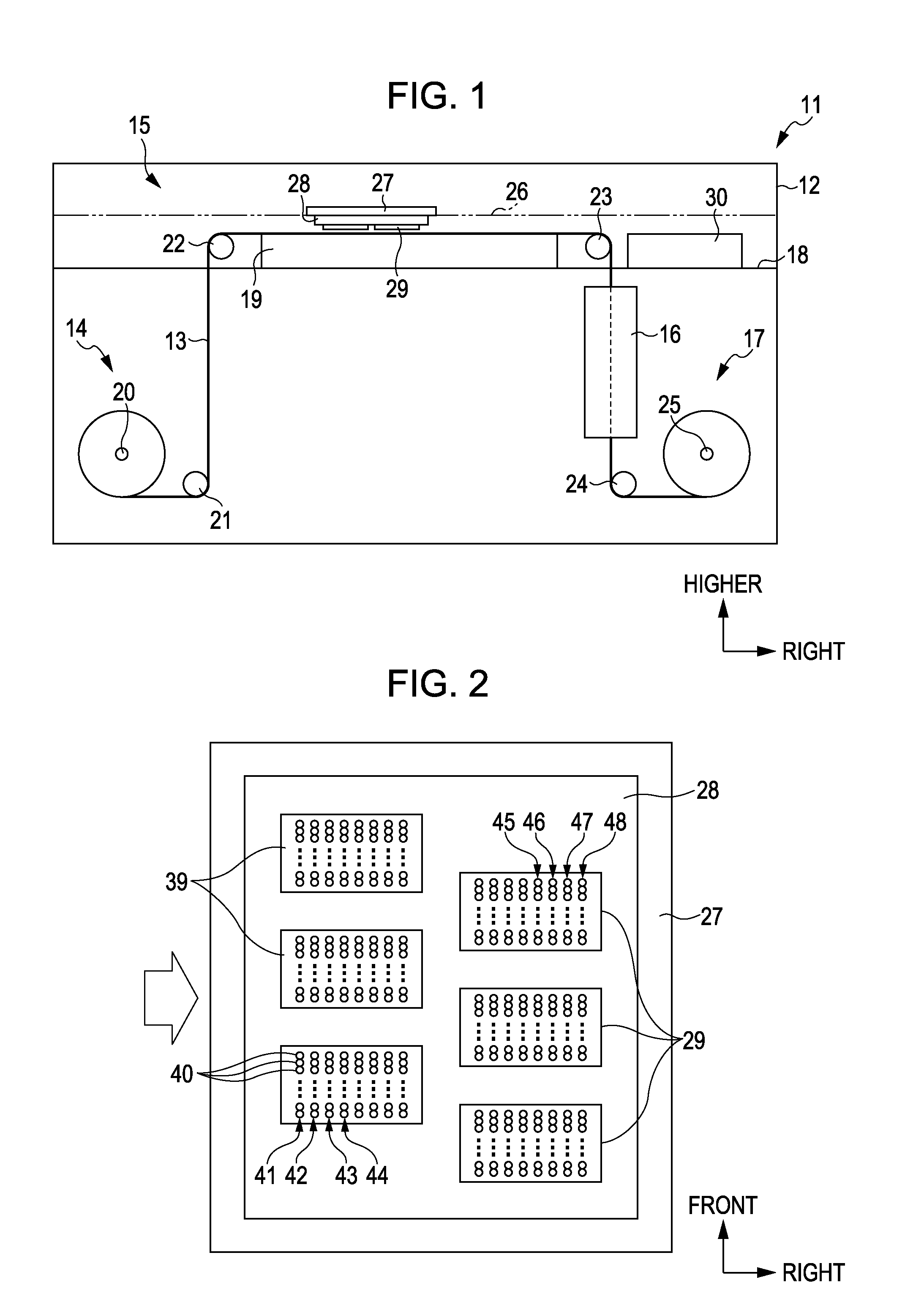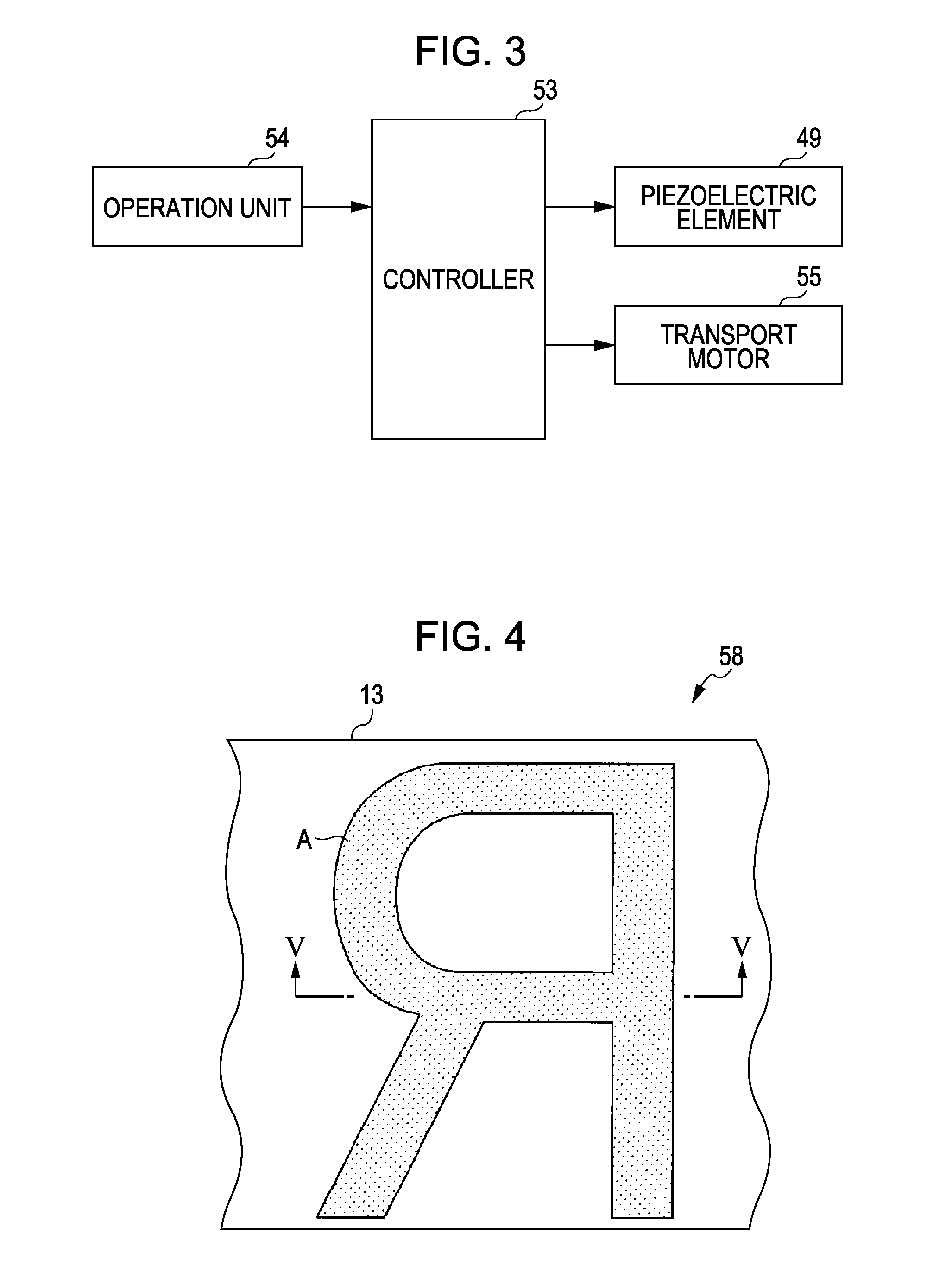Transfer medium manufacturing method and transfer medium
a technology of transfer medium and manufacturing method, which is applied in the direction of recording apparatus, instruments, inking apparatus, etc., can solve the problems of weak adhesion between pattern and adhesive, transfer may not be performed, etc., and achieve the effect of strong adhesion
- Summary
- Abstract
- Description
- Claims
- Application Information
AI Technical Summary
Benefits of technology
Problems solved by technology
Method used
Image
Examples
Embodiment Construction
[0023]Hereinafter, referring to FIGS. 1 to 5, an embodiment will be described in which the invention is embodied by a transfer medium manufacturing device which manufactures a transfer medium by ejecting ink on a film. In addition, it is assumed that in the following description of the specification, “front-back direction,”“transverse direction,” and “longitudinal direction” are shown by taking as a reference directions indicated by arrows in the figures such as FIG. 1 and the like.
[0024]As shown FIG. 1, a transfer medium manufacturing device 11 is provided with a cuboid shaped main body case 12. The main body case 12 is provided with a feed portion 14 which feeds a film 13 having a long ruler shape as a base material, a printing room 15 where printing is performed by ejecting ink, which is first liquid, on the film 13, a drying device 16 which performs a drying processing for the film on which the ink is attached by the printing, and a winding portion 17 which winds the film 13 hav...
PUM
 Login to View More
Login to View More Abstract
Description
Claims
Application Information
 Login to View More
Login to View More - R&D
- Intellectual Property
- Life Sciences
- Materials
- Tech Scout
- Unparalleled Data Quality
- Higher Quality Content
- 60% Fewer Hallucinations
Browse by: Latest US Patents, China's latest patents, Technical Efficacy Thesaurus, Application Domain, Technology Topic, Popular Technical Reports.
© 2025 PatSnap. All rights reserved.Legal|Privacy policy|Modern Slavery Act Transparency Statement|Sitemap|About US| Contact US: help@patsnap.com



